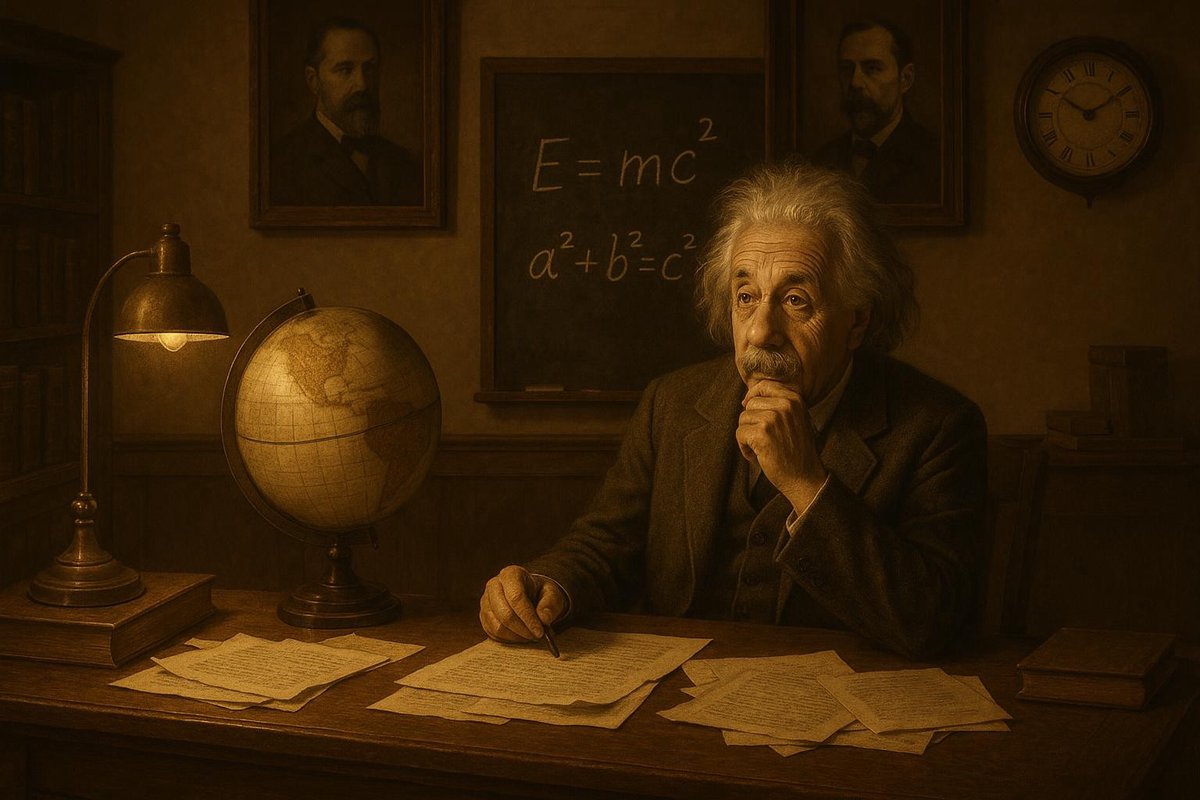
Origin of the Theory: Setting the Scene
In the early 20th century, science was on the brink of transformation. Physics had already seen Newton’s laws rule the roost for over two centuries. Yet, as technology advanced, so did anomalies in our understanding. Enter Einstein, a patent clerk in Bern, Switzerland, pondering the nature of light and time. Imagine a world where trains and telegraphs were cutting-edge — a time when space was thought to be absolute and time universal. Against this backdrop, Einstein began to question the very fabric of reality.
- Einstein worked at the Swiss patent office, away from academic circles.
- His background allowed him the freedom to think outside conventional frameworks.
- Maxwell’s equations and the speed of light were pivotal influences.
The theory didn’t spring from a vacuum. It was a child of its age, growing out of the cracks in classical physics. Were others on a similar path? Perhaps. But Einstein connected disparate ideas in a way that was both elegant and revolutionary.
Key Figures Alongside Einstein
While Einstein may have been the face of the Theory of Relativity, he was far from alone on this intellectual journey. His contemporaries, such as Henri Poincaré and Hendrik Lorentz, were similarly probing into the peculiarities of electromagnetic theory. Interestingly, Poincaré had delved into similar ideas, though he didn’t make the intuitive leap that Einstein did.
- Henri Poincaré: Explored the implications of Maxwell’s equations on space and time.
- Hendrik Lorentz: Developed transformations that later became integral to Einstein’s work.
- James Clerk Maxwell: Set the stage with his equations governing electromagnetism.
These figures were crafting the same puzzle pieces that Einstein would eventually fit together. While we often credit a single genius, it’s crucial to recognize this interconnected web of thinkers. Did Einstein’s unique perspective allow him to see farther by standing on the shoulders of these giants?
The Turning Point: Special and General Relativity
In 1905, Einstein published his theory of Special Relativity, which radically redefined how we perceive space and time. It was a year filled with breakthroughs, but this theory was particularly striking. It told us that time could warp and mass could bend — ideas that seemed heretical at the time.
- 1905: Einstein releases Special Relativity, proposing time dilation and length contraction.
- 1915: General Relativity follows, introducing the curvature of space-time.
- These theories challenged the notion of a fixed, absolute universe.
What made these ideas stick? Perhaps it was their predictive power, confirmed by the famous solar eclipse experiment in 1919. Einstein predicted the bending of light around massive objects — a phenomenon that was observed and celebrated worldwide. Was this the moment that sealed his revolutionary status?
Impact on the World: More Than Just Physics
The implications of Einstein’s theories stretched far beyond physics. They altered our philosophical understanding of reality, reshaping how we perceive the universe and our place within it. The cultural impact was profound, with relativity influencing art, literature, and even politics.
- Einstein became an icon, transcending the world of science.
- His theories influenced modern technology, from GPS to nuclear energy.
- Relativity reshaped our understanding of the universe’s structure and fate.
The public fascination with Einstein turned him into something of a scientific celebrity. His ideas permeated education and inspired countless minds, changing the course of scientific inquiry forever. Did his fame eclipse the incremental nature of scientific progress?
In conclusion, Einstein’s Theory of Relativity was undeniably groundbreaking, yet it was not crafted in isolation. It was both a revolution and an evolution, rooted in the fertile soil of its time. While his genius was unique, the scientific landscape was ripe for such a transformation.
Fuel Someone Else’s Curiosity
Delve deeper into the mysteries of space-time and share this exploration with others. Encourage discussions about how scientific revolutions occur and what they mean for our collective understanding. The more we question and share, the sharper our insights become.

Leave a Reply